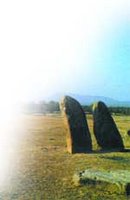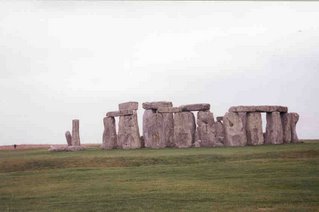Marvel at winter solstice sunrise in Newgrange
Eventually, Brú na Bóinne (usually referred to as "the Bend of the Boyne") became an archaeological park, then a Unesco World Heritage Site in 1995. The visitor centre, a symphony of spirals and mounds in wood, glass, stone and concrete, opened 10 years ago on the south side of the river.
 Newgrange
NewgrangeA small suspension bridge was thrown across the muscular brown waters, where those who originally settled Newgrange some 5,000 years ago would have speared salmon, and a minibus terminus built, from which visitors are ferried to the tomb or its larger sister at Knowth. In the year 2000, a lottery system was introduced for solstice places; this year, there were 28,000 applications.
More of this: Newgrange, Meath, IE


 Skull
Skull Date Line of Evolution
Date Line of Evolution






